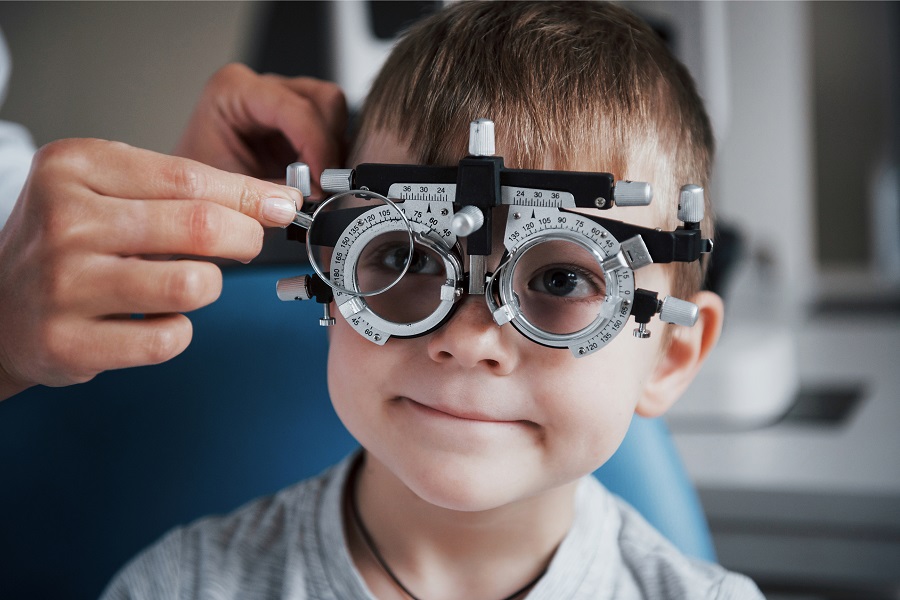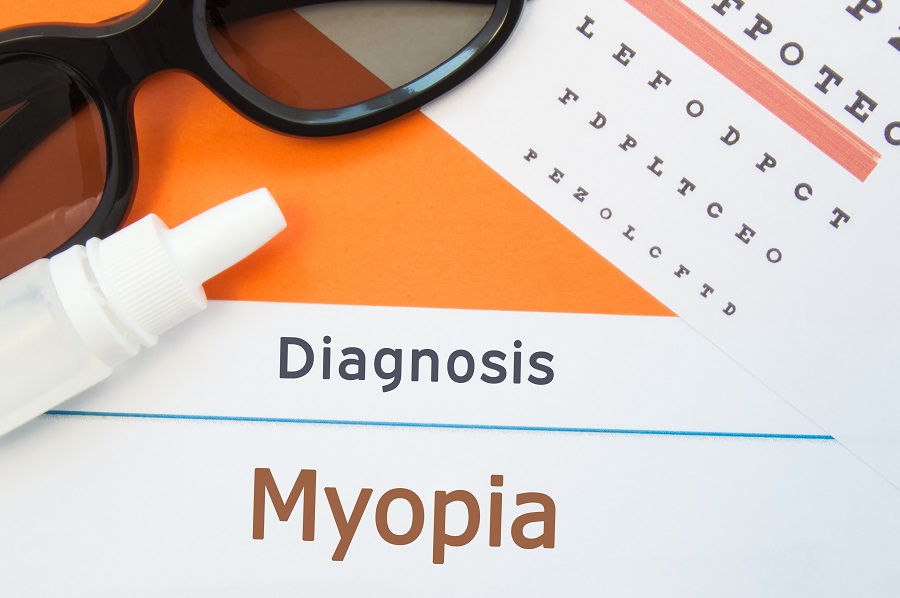WHAT IS MYOPIA?
Myopia is more commonly referred to as nearsightedness, or the inability to see objects clearly in the distance. One reason nearsightedness causes objects to be blurry in the distance is because the eye becomes longer as the child grows. When the eye becomes too long, light rays entering the eye focus incorrectly, making distance vision blurry.
As children grow, their myopia may progress, resulting in a stronger prescription to see distant objects clearly. Myopic progression generally stabilizes when a child reaches adulthood.
Often, only the symptoms of myopia are treated. However, myopia is a complex condition and, if left untreated, myopia often worsens and can lead to eye health complications later in life as well as visual impairment. It can increase the lifetime risk of serious eye conditions such as retinal detachments, myopic maculopathy, glaucoma, and cataracts.
- Retinal Detachment – The risk of retinal detachment is anywhere from 3 to 20 times greater compared to people without myopia, depending on the level of myopia.
- Myopic Maculopathy – Myopic maculopathy can result in vision loss earlier in life than glaucoma or retinopathies.
- Glaucoma – Studies show those with myopia have a 2 to 3 times greater risk of developing glaucoma than non-myopics. Glaucoma can lead to permanent loss of vision in the affected eye(s).
- Cataracts – Though cataracts can affect anyone as they age, they often develop sooner in those who have myopia.
THE MAJOR FACTORS OF MYOPIA
Myopia is on the rise – in it's frequency and it's severity. The reason for the escalation has been linked to two factors:
- Genetics – Myopia increases when parents have myopia. The likelihood of children developing myopia increases to: 1 in 2 when both parents have myopia; 1 in 3 when one parent has myopia; 1 in 4 when neither parent has myopia. This is one of several reasons a child should have an eye examination even if neither parent wears glasses.
- Lifestyle – Spending more time on activities like reading or using handheld devices and increased screen time instead of spending time outdoors increases the likelihood of becoming myopic.
A GROWING CRISIS

In the early 1970's, only 25% of Americans were nearsighted. Today, more than 40% of Americans are nearsighted, and that number is increasing at an alarming rate, especially among school-age children. By 2050, 58% of Americans are predicted to by myopic.
A new study confirmed parental concern about myopia and the increase in online learning, showing the prevalence of myopia (nearsightedness) sharply increased 1.4 to 3 times in 2020, compared with the previous five years. Younger children may be more sensitive to environmental changes (more screen time) than adults, given they are in a critical period for eye growth and myopia development.
As screen time surges and new research findings are published, we encourage parents to continue scheduling comprehensive eye health exams and to keep an eye on behaviors that may play a role in the development of myopia. Behaviors such increased screen time, excessive time indoors and time performing “near work” activities.
MYOPIA MANAGEMENT ASSESSMENT
The American Optometric Association recommends annual eye examinations for children. For those children who are nearsighted, a Myopia Management Assessment is also performed to evaluate characteristics specific to their myopia as well as the treatment options to slow the progression of their nearsightedness; often called myopia control or myopia management.
The Myopia Management Assessment with one of our residency-trained pediatric optometrists includes evaluation of the eye structures using specialized equipment as well as testing of the child's accommodative (eye focusing) and binocular vision (eye teaming) abilities. Whereas traditional glasses and contacts are designed to address the symptom of myopia (blurred vision), myopia control is designed to slow down the physical and functional changes of myopia. The testing performed during a Myopia Management Assessment, which is different than an annual eye exam, is critical to myopia control.


MYOPIA CONTROL TREATMENT
Following a Myopia Management Assessment, your doctor will discuss the results and treatment options. While many treatments have been attempted to control myopia progression, our doctors use only the most proven and safest treatments available for your child.
The preferred treatment options for myopia control offered at Artisan Pediatric Eyecare, based on both clinical research and patient safety, include:
- MiSight Contact Lenses – The first and only soft contact lens specifically designed for myopia control and the only contact lens FDA-approved to slow the progression of myopia in children. They work by using Activ Control Technology, a type of dual focus contact lens, alternating treatment zones to improve blurred distance vision while simultaneously preventing myopia from worsening.
- Prescription Eye Drops – Following research over the past decade, Atropine has emerged as the current pharmaceutical of choice when treating myopia. Although Atropine is not a new medication, it is important to note that all pharmaceutical treatments for myopia control are still considered off-label uses. Off-label drug usage does not mean that the treatment is unsafe, risky, or unproven. Our doctors will discuss the risks and benefits before starting treatment.
Please visit this page to learn more about MiSight Contact Lenses.
Please visit this page to learn more about Atropine Drops.
Myopia control is quickly becoming the new standard of care for eye doctors when treating children with myopia. If your child is 8 years of age or older, and you're interested in learning more about myopia control for your child's nearsightedness, please call to schedule an appointment with one of our residency-trained optometrists.